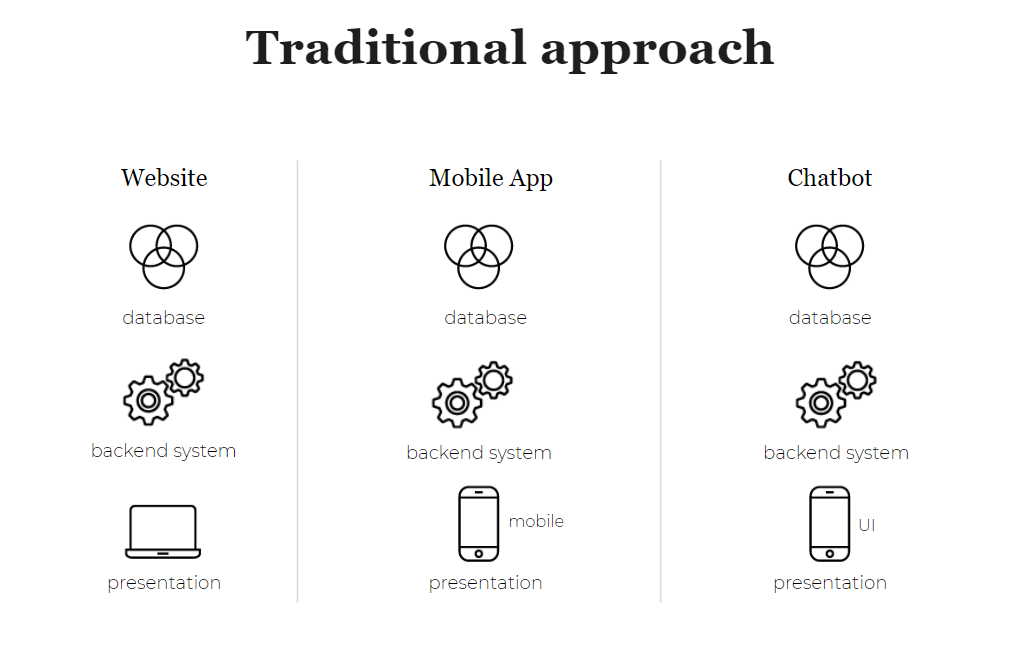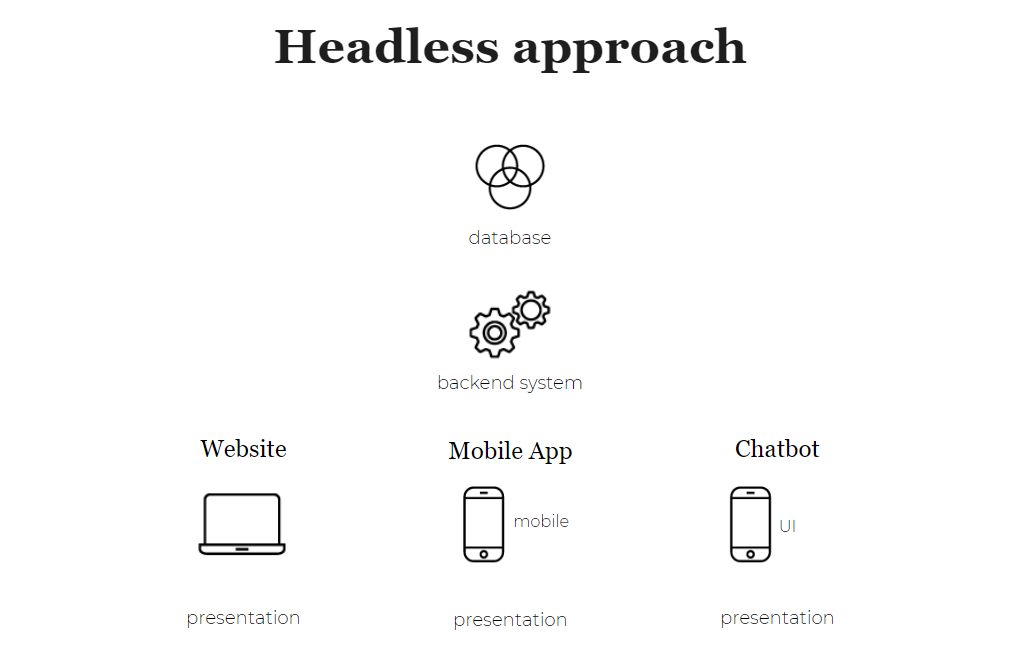Apr 28, 2020
Tags
Software development
Headless approach has been in an industry talking point for the past 2-3 years already and it’s fairly safe to say that it’s here to stay. Still, the choice between headless and traditional, “monolithic” approach boils down to the business needs and is not self-evident. In this article we’ll dive deeper into the pros and cons of headless and how we utilize the capabilities of the technology in digital ventures.

When considering how to build a frontend for an ecommerce & CMS platform, one option is the so called “headless approach”. This means that the frontend part of the system is separated from the “monolith” as its own application, which communicates with the backend system through APIs.
The traditional approach in these types of projects has been to build backends and frontends coupled into one system.


Based on our experience in recent projects, headless technology has now developed into a viable option for most new ecommerce and CMS platform projects. This stems from the fact that the early stage problems of web application JavaScript frameworks have now been solved.
Of course, this technology is not suitable for all cases, and can create extra overhead for development. However, we estimate that serious digital development projects quite often include a magnitude of tailored frontend work and therefore justify the use of the headless approach. On top of that, Lamia has developed a basic setup for Magento 2 and Drupal headless frontends, which tackles the problem of creating all of the basic frontend functionality as custom work in the projects.
However, as said, this technology is not a jack of all trades. Careful planning is needed and also the expertise to evaluate the best technology for the implementation phase based on real user stories, features and architectural aspects.
When implementing projects, in the technical planning phase, the target should be to discover the best long term solutions for your business. This means creating a digital roadmap and with that make sustainable and future-proof technological choices. That’s how all the decisions will now and in the future be based on real business requirements and architectural best practices.
If you’re considering a headless approach or would like to test whether it’s a fit for your digital development needs, let’s discuss more!
"We see that the benefits of headless technology have been increasing all the time and continue to do so towards the future."
There's nothing here!